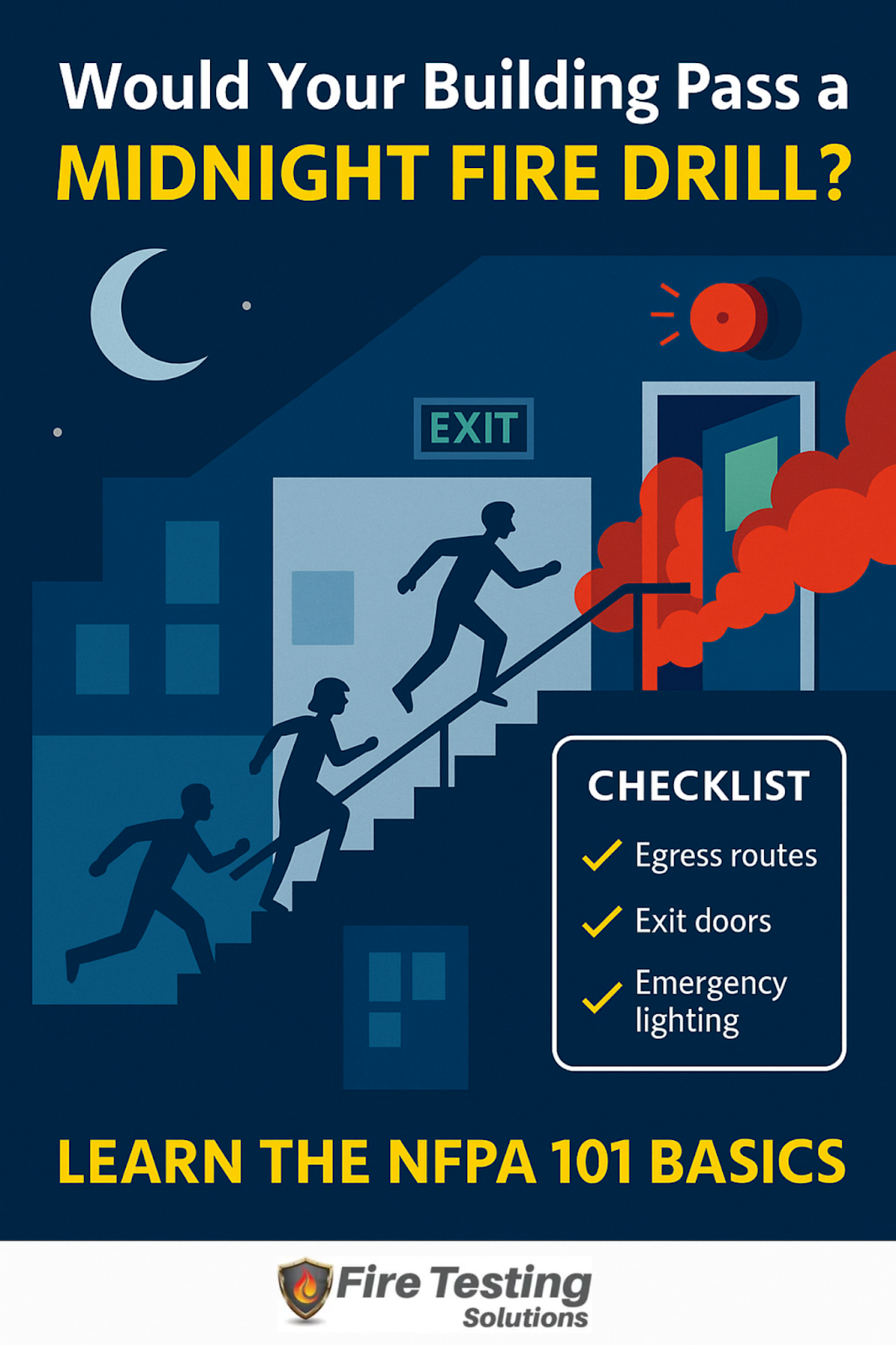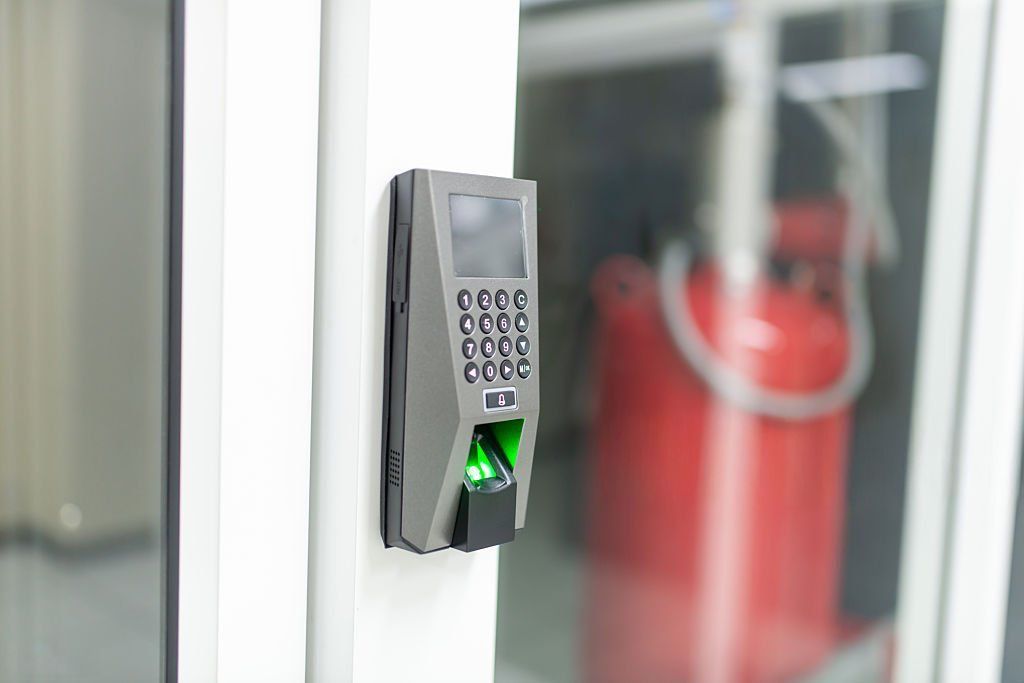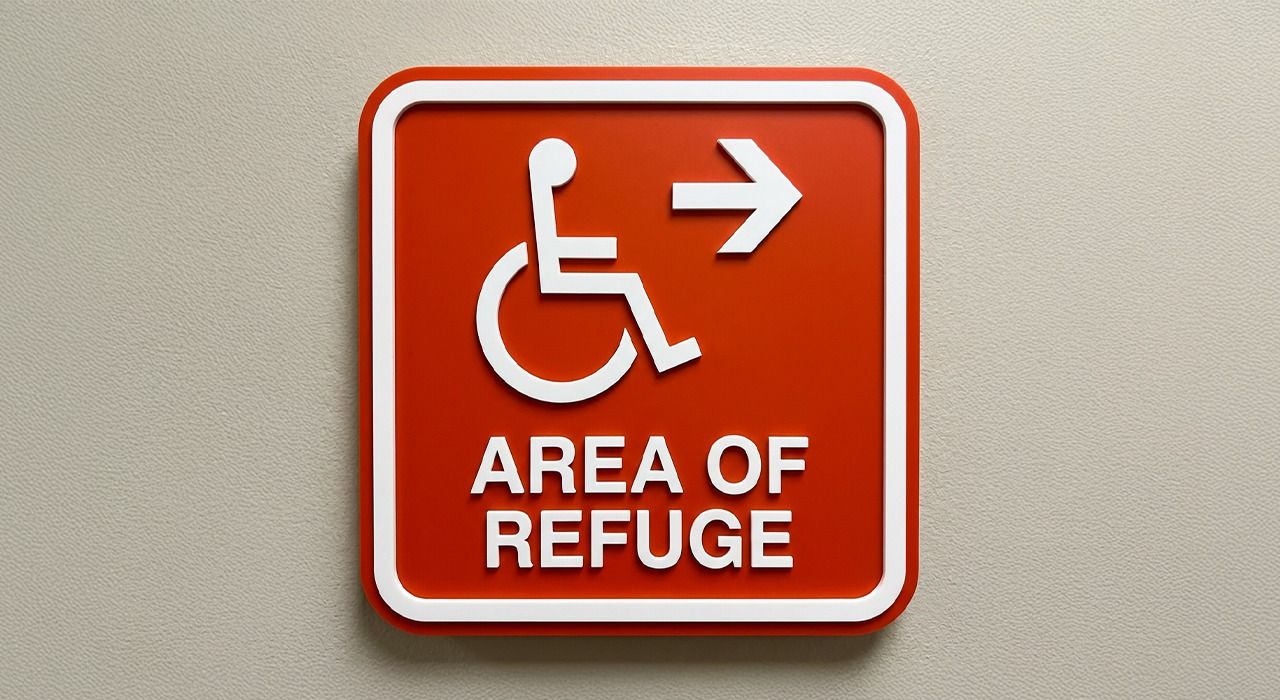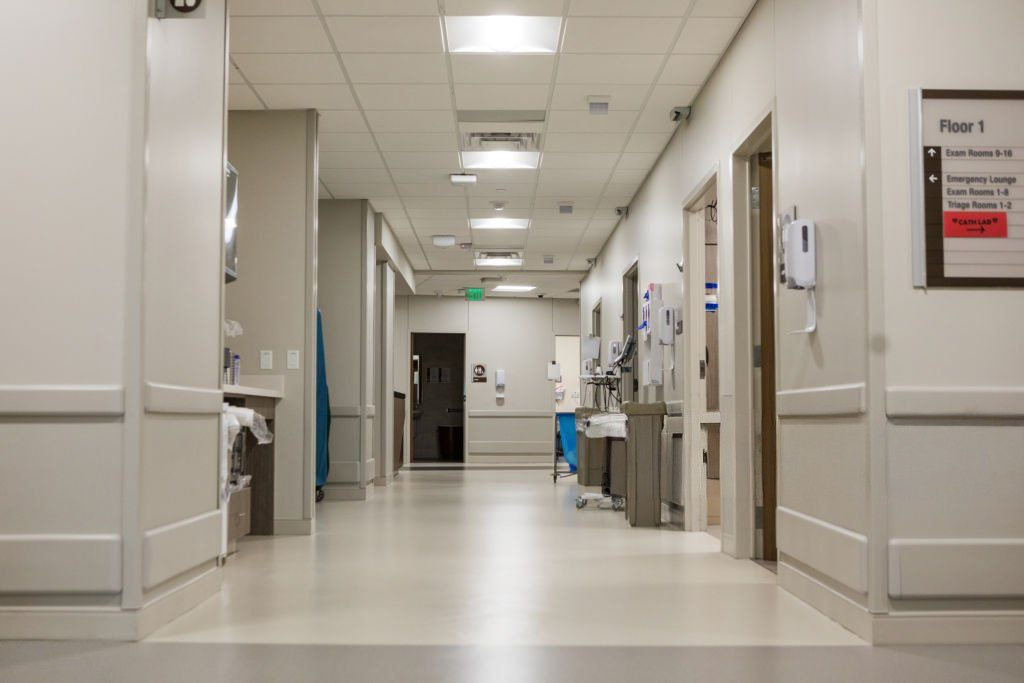Would Your Building Pass a Midnight Fire Drill?
What Is NFPA 101 — And Why Should You Care?
NFPA 101 is known as the Life Safety Code.
It’s not just a regulation. It’s a
blueprint to help people escape your building safely during fires, blackouts, and emergencies.
It covers three life-saving essentials:
- Egress routes – The paths people follow to escape.
- Exit doors – Where those paths lead.
- Emergency lighting – What helps them see the way.
Think of it like Google Maps for emergency evacuation — except it’s your responsibility to keep it working.
Who Must Follow NFPA 101?
Anyone who owns, manages, or maintains a building, including:
- Building Owners
- Facility & Operations Managers
- Property & Compliance Managers
- Hotel/Resort Operators
- Shopping Center Managers
- Healthcare Facility Directors
Whether it’s a corporate office, apartment complex, or warehouse — you’re on the hook.
What NFPA 101 Requires
| Component | What It Means |
|---|---|
| Egress Path | A continuous, clear way out — not blocked by furniture, storage, or locked doors. |
| Exit Doors | Must open outward, be unlocked, and easy to open without special knowledge. |
| Exit Signs | Clearly visible, illuminated, and placed where people can see them through smoke. |
| Emergency Lights | Must automatically turn on if power fails, and stay on for at least 90 minutes. |
| Testing Logs | You must test lighting monthly and record all results — or risk failing an inspection. |

Who Is Responsible for What?
| Role | Responsibility |
|---|---|
| Building Owner | Final accountability for compliance, repairs, and vendor hiring. |
| Property Manager | Ensures daily upkeep, testing logs, and coordination with vendors. |
| Facility/Operations Manager | Performs monthly testing or supervises staff doing so. |
| Compliance Manager | Keeps documentation, confirms inspections, and prepares for audits. |
What Needs to Be Tested — And How Often?
| Frequency | What to Do |
|---|---|
| Monthly | Test emergency lights for 30 seconds. Check exit sign visibility. |
| Annually | Simulate power failure. Lights must last 90 minutes. Document every detail. |
| Ongoing | Keep paths to exits clear. Repair broken signage or lighting immediately. |
Pro Tip: Keep logs for at least 3 years — Fire Marshals will ask!
Real-Life Check: Would You Pass an Audit?
Here’s what fire safety inspectors (or insurance adjusters) look for:
- Testing logs: “Show me your last 12 months.”
- Physical walkthrough: “Why is this stairwell exit locked?”
- Lighting test: “Let’s flip the breaker and see if the emergency lights work.”
No logs = Non-compliance = Fines or worse.
Where We Come In — Fire Testing Solutions
At Fire Testing Solutions, we don’t just test lights and doors — we safeguard lives and help you stay one step ahead of fire safety inspections.
What We Do for You:
- We inspect all emergency lights, exit signs, and egress paths to ensure full NFPA 101 compliance.
- We perform monthly and annual tests — including the 90-minute power-loss simulation — and document every step.
- We provide detailed compliance logs that pass audit checks from Fire Marshals, OSHA, and insurance providers.
- We offer digital recordkeeping so your compliance history is always just a click away.
- We help train your facility team to understand what to look for between inspections.
Whether you’re preparing for an official inspection or just want peace of mind —
we’re your trusted partner in making sure your building is always ready and your people are always protected.
Want to know where you stand today? Schedule a free evaluation and let us show you what a safe, compliant property really looks like.










